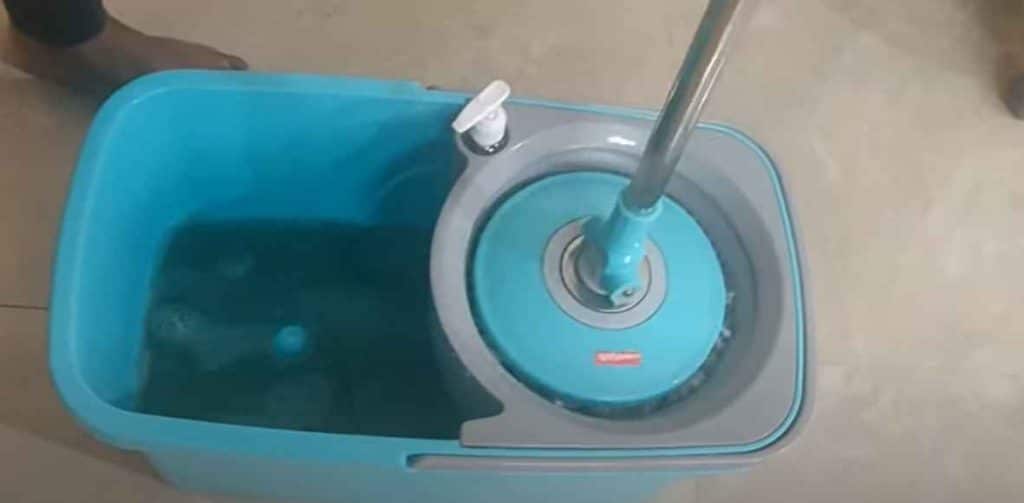Your floor may have streaks after mopping due to residue from cleaning solutions or dirty mop water. Improper mopping techniques can also cause streaking.
Mopping your floors should leave them sparkling clean, but sometimes, an unsightly problem arises — streaks. These unwelcome lines can turn a chore into frustration, leaving homeowners questioning their cleaning methods.
Streaks often result from using too much cleaning product or failing to thoroughly rinse the mop, which redistributes dirt and grime rather than removing it.
Dirty water can leave behind particles that dry into streaks, and certain types of flooring, such as hardwood and laminate, are more prone to this issue. Let’s explain in this content about “Why Does My Floor Have Streaks After Mopping?”
To achieve streak-free floors, it’s essential to use the correct cleaner for the flooring type, ensure your mop is clean, and change the water as it becomes dirty. Addressing these factors can restore the shine to your floors without the hassle of repeat cleaning.
Streaking Phenomenon
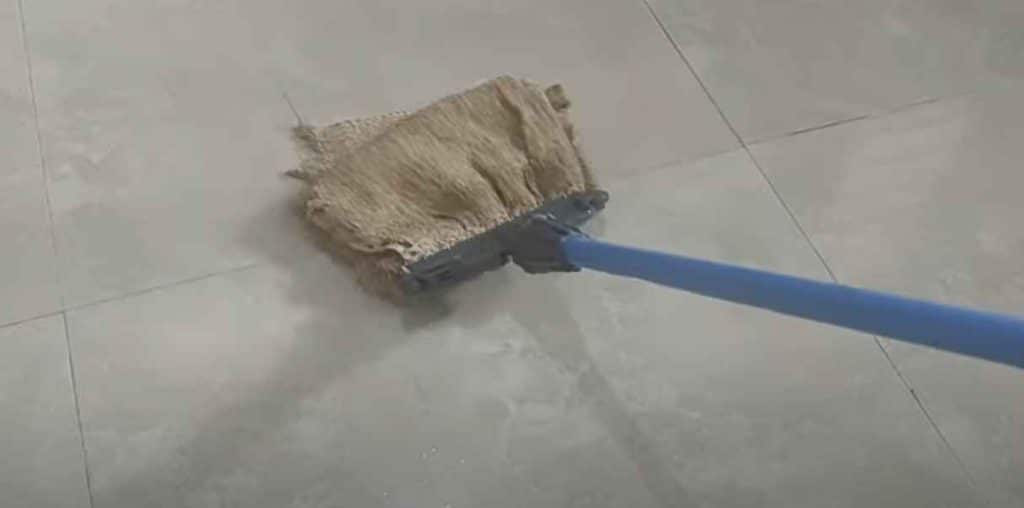
Picture a shiny, spotless floor. Now imagine running a mop across it, expecting a clean finish, only to find streaks crisscrossing its surface. It’s not only frustrating, but it’s also confusing. Why, after all the effort of mopping, does the floor not gleam like it should? Let’s dive into the mysteries behind this streaking phenomenon.
Defining Floor Streaks And Their Appearance After Mopping
Floor streaks are unsightly lines or marks that remain visible after mopping. These imperfections mar the overall appearance of flooring, and can be both dull and glossy. They are the shadow of a job that looks done but isn’t quite there yet. Floor streaks betray residue, uneven cleaning, or other issues plaguing a cleaned surface which helps in tackling them head-on.
Common Causes Of Streaking On Different Types Of Flooring
Different flooring materials face different streaking adversaries. Here’s a simple breakdown.
| Floor Type | Common Causes of Streaking |
|---|---|
| Hardwood | Excess cleaner buildup, dirty mop water, too much moisture |
| Laminate | Oil-based cleaners, not using a microfiber mop |
| Tile | Soap residue, hard water stains |
| Vinyl | Inadequate rinsing, waxy cleaning products |
- Hardwood: Warm water and a flat microfiber mop might work best.
- Laminate: A damp mop and gentle cleaner are keys to avoiding streaks.
- Tile: Avoid soap and aim for a mixture of warm water and vinegar.
- Vinyl: Ensure ample rinsing and opt for non-abrasive cleansers.
Mopping Mishaps: Techniques That Cause Streaking
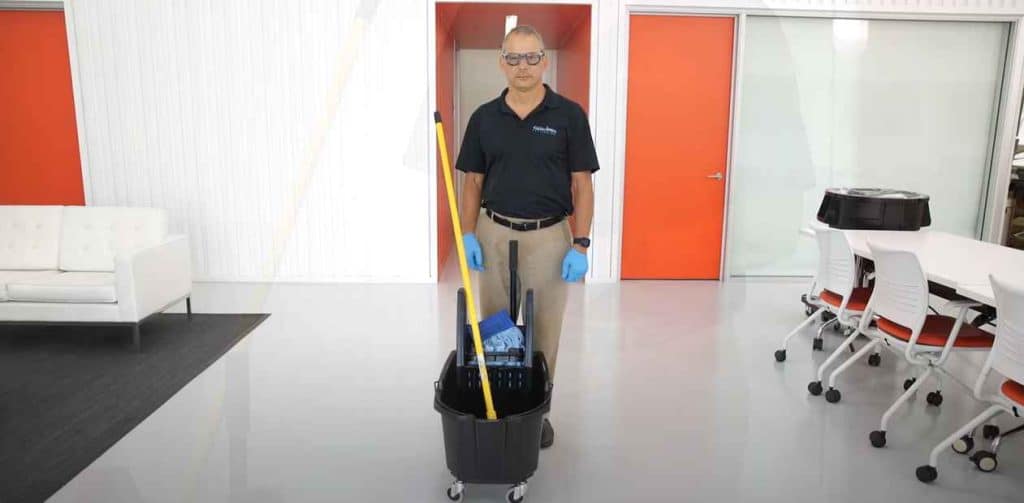
Everyone loves a spotless floor, but what if after mopping, there are streaks? It’s a sign something might be off with your cleaning technique. Streaks occur when floors don’t get cleaned properly. Let’s dive into common mistakes and how you can fix them.
The Role Of Dirty Mop Water In Leaving Residue
Using dirty mop water results in floors that look dingy and feel sticky. Dirty water drops dirt back onto the floor. Here’s why:
- Mop water gets murky quickly.
- Dirty solution doesn’t lift grime; it spreads it.
- Rinsing your mop often is key for a streak-free shine.
Inefficient Mopping Patterns And Their Contribution To Streaks
A wrong mopping pattern can cause streaks. Random mopping doesn’t cover all areas evenly. Follow this approach:
- Start from a corner and work your way out.
- Use a figure-eight motion for even cleaning.
- Avoid mopping yourself into a corner.
Overuse Of Cleaning Products And Its Impact On Floor Clarity
Too much cleaner doesn’t mean a cleaner floor. In fact, it’s the opposite. Here’s the impact:
- Excess product leaves a hazy film.
- More isn’t always better; stick to the recommended ratio.
- Use a spray bottle for controlled application.
Flooring Materials And Streak Formation
Ever wondered why your sparkling clean floor suddenly looks like an abstract painting with unwanted streaks? The type of flooring material could be the culprit. Not all floors are created equal, and some are more prone to streaking after mopping than others.
Characteristics Of Various Floor Types And Their Susceptibility To Streaks
- Hardwood Floors: Natural and sensitive, requires special cleaners to avoid streaks.
- Laminate: Mimics wood with better streak resistance but still needs proper care.
- Vinyl: Tough and less likely to streak, but quality of finish can affect results.
- Tile: Glazed tiles resist streaks well, but grout lines may complicate cleaning.
- Stone: Varieties like marble need specific products to maintain shine without streaks.
Evaluating The Impact Of Sealants And Waxes On Floor Streaking
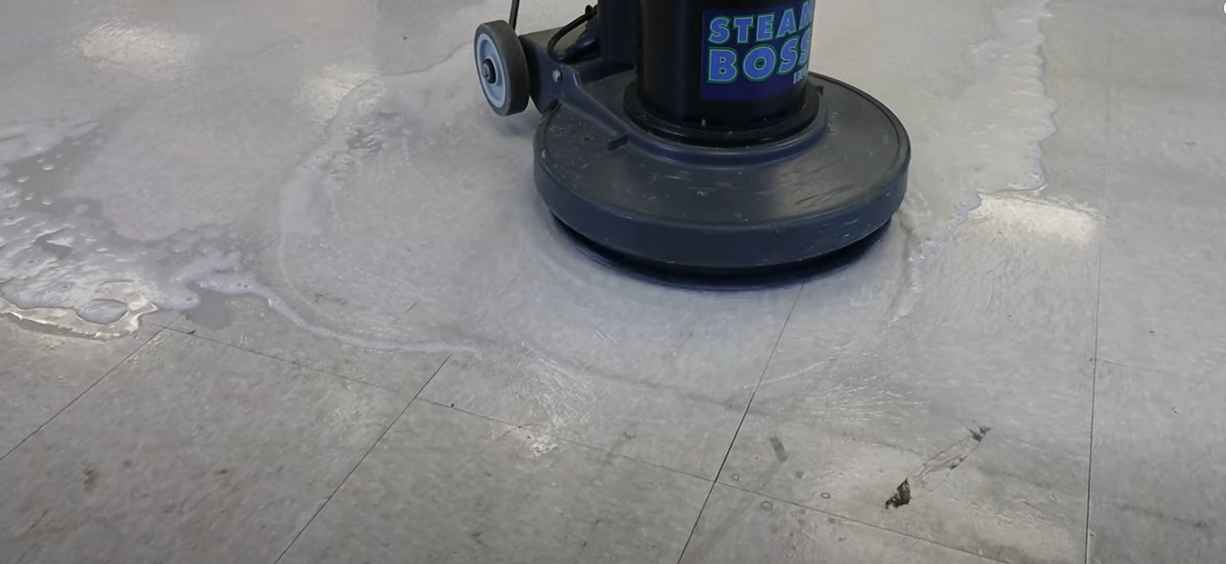
Different floor finishes like sealants and waxes influence streak formation. A wax layer can hold onto residue, leading to streaks. Sealants might react differently. Choose the right product based on:
| Floor Type | Recommended Sealant/Wax | Streak Risk |
|---|---|---|
| Hardwood | Water-based Sealant | Low |
| Laminate | No Wax Sealant | Medium |
| Vinyl | Acrylic Finish | Low |
| Tile | Glaze Sealer | Medium |
| Stone | Penetrating Sealant | Varies |
Water Quality And Its Effect On Mopping Outcomes
Ever wonder why your floor doesn’t sparkle even after a good mop? The answer might lie in the water you use. Water quality plays a vital role in the finish of your mopped floor. Dealing with streaks can be frustrating, but the water coming out of your tap could be the key to shiny floors.
Let’s explore how water affects the cleanliness of your surfaces and find solutions for those annoying streaks.
Hard Water Versus Soft Water
Water isn’t just water when it comes to cleaning. The type of water in your home has a big impact on mopping efficiency. Hard water contains minerals like calcium and magnesium. These minerals can leave behind residue, which looks like streaks on your floor.
Soft water, in contrast, has fewer of these minerals. It’s more effective for a streak-free shine. Let’s break down these differences.
| Water Type | Mineral Content | Effect on Floors |
|---|---|---|
| Hard Water | High in Calcium and Magnesium | Can Leave Streaks and Residue |
| Soft Water | Low Mineral Content | Fewer Streaks, Cleaner Finish |
Solutions For Overcoming Water-induced Streaks On Floors
To combat water-induced streaks, try the following:
- Filter the Water: Use a filtration system to reduce mineral content.
- Dry Properly: After mopping, use a clean, dry mop to absorb excess moisture.
- Vinegar Solution: Add a bit of vinegar to your mop water to break down residues.
- Test a small area first.
- Mix one cup of vinegar to a gallon of water.
- Mop as usual and enjoy the shine!
Your floors can be free of streaks with these tips. For further assistance, consider seeking professional advice.
Best Practices In Mopping For Streak-free Floors
Imagine gliding across your floor after a fresh mop only to find streaks trailing behind. Frustrating, isn’t it? Streaks can dull the shine of your floors and make your cleaning efforts feel in vain. But worry not! By mastering a few best practices in mopping, you can achieve the gleaming, streak-free floors that make your heart skip a beat.
Choosing The Right Mop And Cleaning Solution
Selecting the perfect mop is necessary for streak-free floors. An old or wrong mop spreads dirt, leaving unsightly marks. The right mop glides effortlessly and absorbs excess water.
- Flat mops work well on hardwood and laminate.
- String mops are best for tile floors with grout lines.
- Microfiber mops excel for most floor types.
Pair your mop with the right cleaner for unbeatable results. Avoid soap-heavy solutions; they leave residue. Opt for pH-neutral cleaning solutions specifically designed for your floor type. Mix according to instructions for the perfect balance.
Effective Mopping Techniques To Prevent Streaking
Mopping isn’t just about the mop; it’s about the method. Perfect your technique with these steps:
- Sweep or vacuum first to remove loose dirt and debris.
- Use clean water and refresh it when it gets dirty.
- Wring your mop well; too much water causes streaks.
- Mop in sections, using a figure-eight motion to maximize coverage and efficiency.
- Replace mop heads or pads regularly to avoid spreading grime.
Remember, taking care of your floors doesn’t need to be a daunting task. A good mop, the correct cleaning solution, and the right technique are all it takes to make your floors sparkle without streaks. Keep these tips in mind, and you’re sure to see a difference!
Troubleshooting Post-mopping Streaks
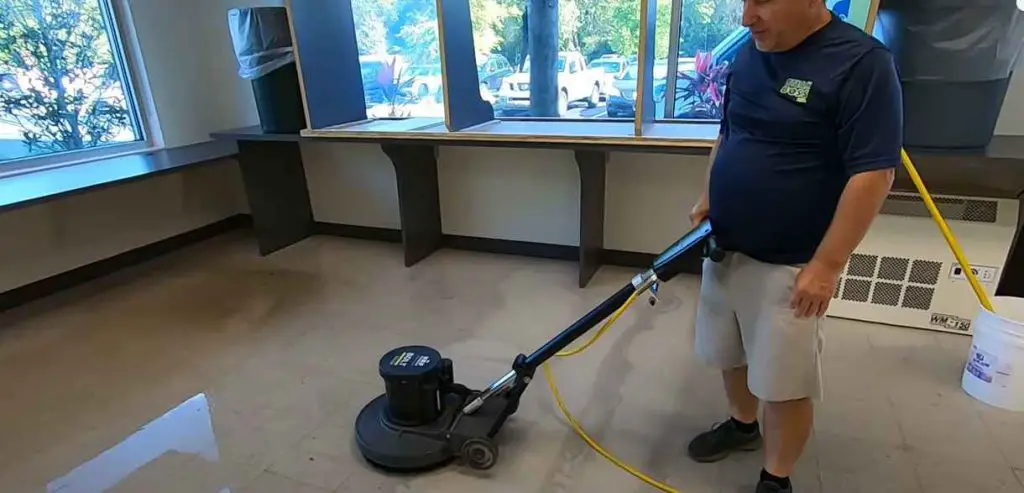
No one loves the sight of streaky floors after a fresh mop. You expect a sparkling finish, but instead, you’re left with unsightly lines that detract from your home’s cleanliness. Rest assured, these streaks can often be fixed with a few tweaks to your cleaning routine.
Step-by-step Guide To Fixing Streaked Floors
Identify the Cause: Before diving into solutions, it’s known to understand why streaks occur. Common culprits include dirty mop water, too much cleaning solution, and wrong mop type.
- Prepare the Area: Remove furniture and rugs for easy access and thorough cleaning.
- Clean Your Mop: Ensure it’s free of previous cleaning residues and debris.
- Change Water Regularly: Dirty water equals dirty floors. Keep it fresh!
- Use Diluted Solution: Too much cleaner leaves residue. Follow the instructions on the bottle.
- Buff the Floor: Use a clean, dry microfiber cloth or mop head after washing to shine.
Preventive Measures To Keep Floors Streak-free After Mopping
Prevention is better than the cure, and it applies to mopping too. Adopt these strategies to minimize streaks.
- Right Cleaner: Choose a solution compatible with your flooring material.
- Proper Mopping Technique: Use a figure-eight motion to minimize pooling.
- Controlled Water Use: Don’t soak your floors; a damp mop is sufficient.
- Regular Maintenance: Sweep or vacuum often to keep floors dust-free.
- Mop Upgrades: Consider microfiber or spray mops for better results.
Professional Insights And Advanced Solutions
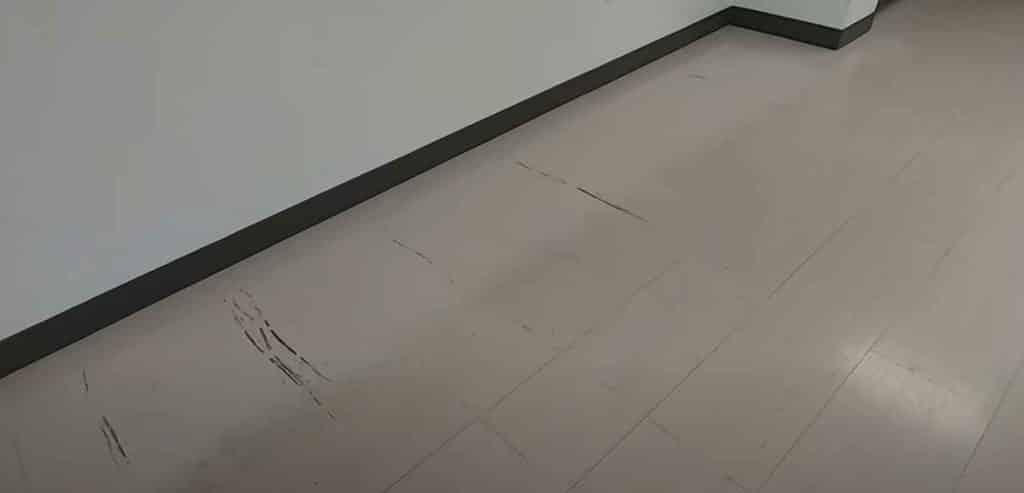
Finding streaks on your floor post-mopping can be frustrating. It takes the shine away from your cleaning efforts. This guide dives deep into why this happens and how to achieve shimmering, streak-free floors every time. Professional floor care experts weigh in, offering their seasoned advice and advanced solutions. Ready for spotless floors? Let’s explore the secrets together.
Expert Advice On Maintaining Clean And Streak-free Floors
The goal is clear: perfectly clean floors without the residual streaks. Here’s how:
- Right Mop Choice: Use microfiber mops that absorb well and don’t leave residue.
- Proper Cleaning Solution: Choose a solution suited for your flooring type.
- Correct Water Temperature: Warm water works best for dissolving grime.
- Dilution Is Key: Overly concentrated cleaners can cause streaks.
- Regular Mop Replacement: Dirty or old mop heads won’t clean effectively.
- Avoid Over-wetting: Too much water can leave streaks when it dries.
- Buff Dry: After mopping, use a dry cloth to buff the floor.
High-tech Cleaning Tools And Products To Combat Floor Streaking
Embrace innovation to keep your floors impeccable. Here’s a glimpse of the future of floor cleaning:
| Tool/Product | Features | Benefits |
|---|---|---|
| Robot Mops | Automated, precise cleaning with smart sensors | Efficient and consistent cleaning patterns |
| Steam Mops | Heat and moisture control | Dissolves stubborn stains without chemicals |
| Eco-Friendly Solutions | Plant-based, pH-neutral | Safe for most floor types without streaking |
| Microfiber Spin Mops | Controlled moisture, easy to wring out | Reduces excess water, preventing streaks |
Engineering has stepped in to help us find better ways to achieve the desired sparkle without the extra elbow grease. Combine these state-of-the-art tools with the expert advice above, and you’re well on your way to a flawless floor.
Frequently Asked Questions On Why Does My Floor Have Streaks After Mopping
How Do You Get Rid Of Streaks After Mopping?
To eliminate streaks after mopping, use a mixture of warm water and vinegar, change the mop water frequently, and finish by drying with a clean, lint-free cloth or microfiber pad. Ensure the mop head is clean before starting to prevent residue build-up.
Why Do My Floors Look Streaky After I Mop?
Streaky floors after mopping can result from using too much cleaning solution, dirty mop water, or not fully rinsing the mop. Ensure you wring out the mop well and use the right cleaner-to-water ratio.
How Do You Fix Streaks On The Floor?
To fix streaks on the floor, first identify the cause. Use a microfiber mop and a suitable cleaner for your floor type. Mop in the direction of the grain and avoid excess water. Buff the floor dry with a clean cloth.
Repeat if necessary to ensure a streak-free finish.
How Do You Remove Mop Marks From Floor?
To remove mop marks from a floor, mix equal parts vinegar and water, apply to the stains, then wipe with a clean, damp cloth. For stubborn marks, use a gentle floor cleaner as per manufacturer’s instructions. Rinse thoroughly with water to prevent residue.
Is It Better To Mop With Hot Water or Cold Water?
Hot water is generally more efficient for cutting through grease and grime on hard surfaces like tile or linoleum, while cold water may be suitable for delicate surfaces like hardwood to prevent damage from excessive heat.
Conclusion
Banishing streaks from your floors is simpler than you might think. Adopt the right techniques and choose suitable cleaning agents. Maintain spotless surfaces by tweaking your mopping routine. Say goodbye to unsightly marks and enjoy gleaming floors with each clean.
Remember, the shine reflects your care.

